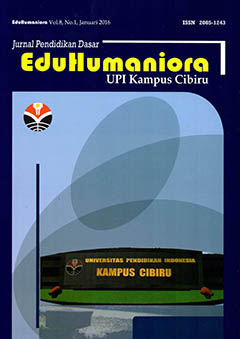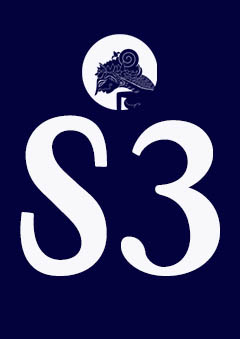TREND RISET NEUROPEDAGOGI DAN IMPLEMENTASINYA DALAM PENDIDIKAN
Abstract
This article aims to review the development of neuropedagogy research and its implementation in education. The method of writing this article is to use literature study (literature review). In this study twenty articles were chosen between the years 2016-2019 taken from google scholars' sources on the topic of neuropedagogy in education. Research on neuropedagogy has experienced significant developments, various scientific fields have sought to integrate neuropedagogy as an approach, technique and learning method to optimize student performance in learning. Various levels of education starting at the level of early childhood education until students have become the target of a neuropedagogical approach, but research on the implementation of neuropedagogy at the elementary school level has not been much researched. This is what underlies the authors to conduct a review of neuropedagogical research trends, so that it becomes a recommendation for further follow-up research, especially in the field of basic education.
Keywords
Full Text:
PDFReferences
Aleksandrova, N. A., Chernyaeva, T. N., Khramova, M. V., & Hramov, A. E. (2018, September). The Implementation Of The Innovation Platform" Educational Potential Of Hardware-Software Complexes Based On The Study And Interpretation Of Brain Activity Patterns". In 2018 IEEE International Conference" Quality Management, Transport And Information Security, Information Technologies"(IT&QM&IS) (Pp. 533-535). IEEE.
Aleksandrova, N. A., Hramov, A. E., & Khramova, M. V. (2018, September). Designing, Implementation And Use Of Robotic Devices In The Social Sectors In Foreign Studies. In 2018 IEEE International Conference" Quality Management, Transport And Information Security, Information Technologies"(IT&QM&IS) (Pp. 536-541). IEEE.
Allaberdieva, K. (2019). The Main Neuropedagogic Possibilities Of Formation At Children Of Senior Preschool Age Of Creative Activity. European Journal Of Research And Reflection In Educational Sciences Vol, 7(12).
Bergen, D., & Woodin, M. (2017). Brain Research And Childhood Education. Implications For Educators, Parents And Society. New York: Routledge.
Caragea, V. M., Miulescu, M. L., Balica, M., & Voinea, L. (2017). Educational Neuroscience: The Rise Of A New Research Field In Educational Sciences. Ukrainian Pedagogical Journal, 3, 89-101.
Chojak, M. (2018) Neuropedagogy As A Scientific Discipline: Interdisciplinary Description Of The Theoretical Basis For The Development Of A Research Field.World Academy Of Science, Engineering And Technology International Journal Of Educational And Pedagogical Sciences, Vol. 12 (8)
Coutts, K. D. R., & Davis, K. (2018). Diverse Learning And The Challenge Of Inclusive Practices In Higher Education: An Australian Self-Study Action Research Exemplar Of A Student With Dyslexia.
Doukakis, S., & Vlamos, P. (2018). Enhancement Programming Skills And Transforming Knowledge Of Programming Through Neuroeducation Approaches. Education, 4(12).
Doukakis, S. (2019). Exploring Brain Activity And Transforming Knowledge In Visual And Textual Programming Using Neuroeducation Approaches.
Feiler, J. B., & Stabio, M. E. (2018). Three Pillars Of Educational Neuroscience From Three Decades Of Literature. Trends In Neuroscience And Education, 13, 17-25.
Kirby, L. F. (2016). Brain Science And Teaching: A Forty-Year Personal History. In Forum On Public Policy Online (Vol. 2016, No. 1). Oxford Round Table. 406 West Florida Avenue, Urbana, IL 61801.
Kitchenham, B., & Charters, S. (2007). Guidelines For Performing Systematic Literature Reviews In Software Engineering.
Mak, V., Szécsi, T., & Varga, L. (2018). Overview Of EEG Research In Early Childhood Education: An International Perspective. Képzés És Gyakorlat: Training And Practice, 16(3), 37-44.
Mercier, J., & Bédard, M. (2017). An Educational Neuroscience Perspective On Tutoring: To What Extent Can Electrophysiological Measures Improve The Contingency Of Tutor Scaffolding And Feedback?. Themes In Science And Technology Education, 9(2), 109-125.
Moravcová, L., & Maďarová, L. (2016). Neurodidactics And Its Utilization In The Field Of Language Teaching. W E. Horská, Z. Kapsdorferová, M. Hallová (Red.), International Scientific Days.
Nouri, A. (2016). The Basic Principles Of Research In Neuroeducational Studies. International Journal Of Cognitive Research In Science, Engineering And Education. 4(1)
Schmidt Pedersen, K., Pallesen, H., & Kaae Kristensen, H. (2016). Constraint-Induced Movement Therapy For Children With Acquired Brain Injury: Didactical Approach And Functional Change. European Journal Of Physiotherapy, 18(1), 34-46.
Sandakova, L. B., & Tolstobrova, L. I. (2019, July). Proliferation Of Neuroscientific Knowledge In Pedagogy And Education. In " Humanities And Social Sciences: Novations, Problems, Prospects"(HSSNPP 2019). Atlantis Press.
Silva-López, R. B., Fallad, J., Reyes-Ortiz, J. A., Bravo, M., & Rodriguez, J. (2015, December). Techno Neuro Pedagogy System: An Instructional Design Methodology For Customized Online Courses (Virtual Customized Environment Learning). In 2015 International Conference On Computational Science And Computational Intelligence (CSCI) (Pp. 281-286). IEEE.
Stepanov, V., Levanova, E., Klemantovich, I., & Kozilova, L. (2016). Neuropedagogics As The Modern Phase Of The Development Of The Education Science. YOUNG SCIENTIST (USA), Vol. 6, 25.
Szécsi, T., Varga, L., & Mak, V. (2018). Current Trends, Dilemmas And Future Directions In Neuropedagogy In The Field Of Early Childhood. Képzés És Gyakorlat: Training And Practice, 16(3), 51-58.
Varga, L., & Szécsi, T. (2018). Neuropedagogy In Early Childhood In Hungary: Foundations And Micro-Investigation. Képzés És Gyakorlat: Training And Practice, 16(3), 67-74.
DOI: https://doi.org/10.17509/eh.v13i1.22858
Refbacks
- There are currently no refbacks.
Copyright (c) 2021 EduHumaniora | Jurnal Pendidikan Dasar Kampus Cibiru
EduHumaniora: Jurnal Pendidikan Dasar
Published in collaboration Program Studi PGSD UPI Kampus Cibiru
and
HDPGSDI
This work is licensed under a Creative Commons Attribution-ShareAlike 4.0 International License.















